Vatche Isahagian
On Automating Security Policies with Contemporary LLMs
Jun 05, 2025Abstract:The complexity of modern computing environments and the growing sophistication of cyber threats necessitate a more robust, adaptive, and automated approach to security enforcement. In this paper, we present a framework leveraging large language models (LLMs) for automating attack mitigation policy compliance through an innovative combination of in-context learning and retrieval-augmented generation (RAG). We begin by describing how our system collects and manages both tool and API specifications, storing them in a vector database to enable efficient retrieval of relevant information. We then detail the architectural pipeline that first decomposes high-level mitigation policies into discrete tasks and subsequently translates each task into a set of actionable API calls. Our empirical evaluation, conducted using publicly available CTI policies in STIXv2 format and Windows API documentation, demonstrates significant improvements in precision, recall, and F1-score when employing RAG compared to a non-RAG baseline.
FLOW-BENCH: Towards Conversational Generation of Enterprise Workflows
May 16, 2025Abstract:Business process automation (BPA) that leverages Large Language Models (LLMs) to convert natural language (NL) instructions into structured business process artifacts is becoming a hot research topic. This paper makes two technical contributions -- (i) FLOW-BENCH, a high quality dataset of paired natural language instructions and structured business process definitions to evaluate NL-based BPA tools, and support bourgeoning research in this area, and (ii) FLOW-GEN, our approach to utilize LLMs to translate natural language into an intermediate representation with Python syntax that facilitates final conversion into widely adopted business process definition languages, such as BPMN and DMN. We bootstrap FLOW-BENCH by demonstrating how it can be used to evaluate the components of FLOW-GEN across eight LLMs of varying sizes. We hope that FLOW-GEN and FLOW-BENCH catalyze further research in BPA making it more accessible to novice and expert users.
OptiSeq: Optimizing Example Ordering for In-Context Learning
Jan 25, 2025Abstract:Developers using LLMs in their applications and agents have provided plenty of anecdotal evidence that in-context-learning (ICL) is fragile. In addition to the quantity and quality of examples, we show that the order in which the in-context examples are listed in the prompt affects the output of the LLM and, consequently, their performance. In this paper, we present OptiSeq, which introduces a score based on log probabilities of LLM outputs to prune the universe of possible example orderings in few-shot ICL and recommend the best order(s) by distinguishing between correct and incorrect outputs resulting from different order permutations. Through a detailed empirical evaluation on multiple LLMs, datasets and prompts, we demonstrate that OptiSeq improves accuracy by 6 - 10.5 percentage points across multiple tasks.
TaskDiff: A Similarity Metric for Task-Oriented Conversations
Oct 25, 2023Abstract:The popularity of conversational digital assistants has resulted in the availability of large amounts of conversational data which can be utilized for improved user experience and personalized response generation. Building these assistants using popular large language models like ChatGPT also require additional emphasis on prompt engineering and evaluation methods. Textual similarity metrics are a key ingredient for such analysis and evaluations. While many similarity metrics have been proposed in the literature, they have not proven effective for task-oriented conversations as they do not take advantage of unique conversational features. To address this gap, we present TaskDiff, a novel conversational similarity metric that utilizes different dialogue components (utterances, intents, and slots) and their distributions to compute similarity. Extensive experimental evaluation of TaskDiff on a benchmark dataset demonstrates its superior performance and improved robustness over other related approaches.
ProtoNER: Few shot Incremental Learning for Named Entity Recognition using Prototypical Networks
Oct 03, 2023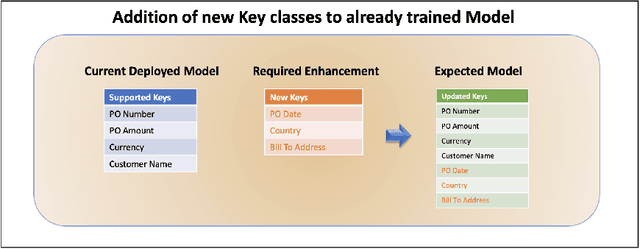
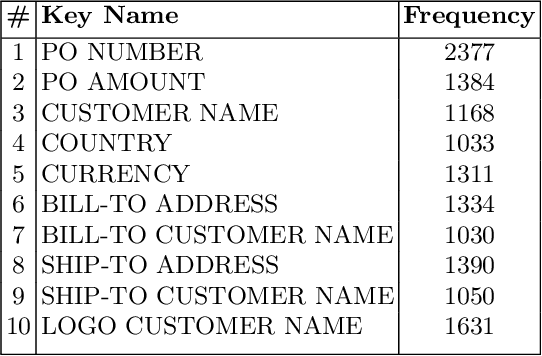
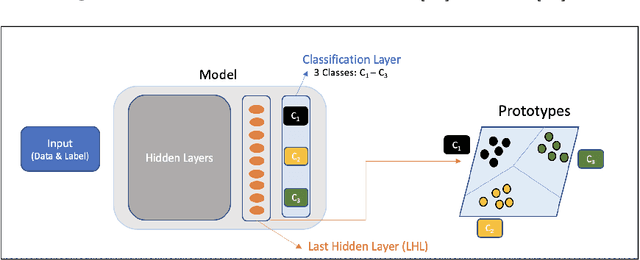
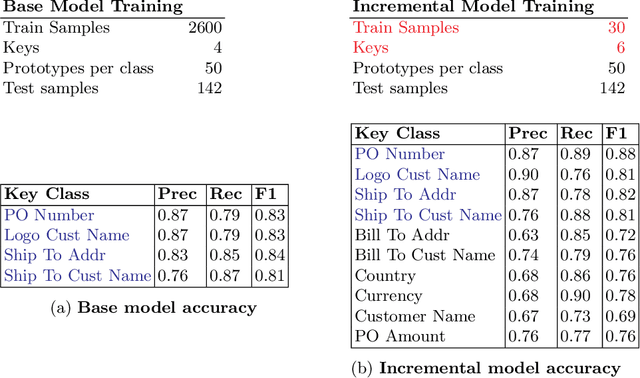
Abstract:Key value pair (KVP) extraction or Named Entity Recognition(NER) from visually rich documents has been an active area of research in document understanding and data extraction domain. Several transformer based models such as LayoutLMv2, LayoutLMv3, and LiLT have emerged achieving state of the art results. However, addition of even a single new class to the existing model requires (a) re-annotation of entire training dataset to include this new class and (b) retraining the model again. Both of these issues really slow down the deployment of updated model. \\ We present \textbf{ProtoNER}: Prototypical Network based end-to-end KVP extraction model that allows addition of new classes to an existing model while requiring minimal number of newly annotated training samples. The key contributions of our model are: (1) No dependency on dataset used for initial training of the model, which alleviates the need to retain original training dataset for longer duration as well as data re-annotation which is very time consuming task, (2) No intermediate synthetic data generation which tends to add noise and results in model's performance degradation, and (3) Hybrid loss function which allows model to retain knowledge about older classes as well as learn about newly added classes.\\ Experimental results show that ProtoNER finetuned with just 30 samples is able to achieve similar results for the newly added classes as that of regular model finetuned with 2600 samples.
DiSTRICT: Dialogue State Tracking with Retriever Driven In-Context Tuning
Dec 06, 2022Abstract:Dialogue State Tracking (DST), a key component of task-oriented conversation systems, represents user intentions by determining the values of pre-defined slots in an ongoing dialogue. Existing approaches use hand-crafted templates and additional slot information to fine-tune and prompt large pre-trained language models and elicit slot values from the dialogue context. Significant manual effort and domain knowledge is required to design effective prompts, limiting the generalizability of these approaches to new domains and tasks. In this work, we propose DiSTRICT, a generalizable in-context tuning approach for DST that retrieves highly relevant training examples for a given dialogue to fine-tune the model without any hand-crafted templates. Experiments with the MultiWOZ benchmark datasets show that DiSTRICT outperforms existing approaches in various zero-shot and few-shot settings using a much smaller model, thereby providing an important advantage for real-world deployments that often have limited resource availability.
FedGen: Generalizable Federated Learning
Nov 03, 2022Abstract:Existing federated learning models that follow the standard risk minimization paradigm of machine learning often fail to generalize in the presence of spurious correlations in the training data. In many real-world distributed settings, spurious correlations exist due to biases and data sampling issues on distributed devices or clients that can erroneously influence models. Current generalization approaches are designed for centralized training and attempt to identify features that have an invariant causal relationship with the target, thereby reducing the effect of spurious features. However, such invariant risk minimization approaches rely on apriori knowledge of training data distributions which is hard to obtain in many applications. In this work, we present a generalizable federated learning framework called FedGen, which allows clients to identify and distinguish between spurious and invariant features in a collaborative manner without prior knowledge of training distributions. We evaluate our approach on real-world datasets from different domains and show that FedGen results in models that achieve significantly better generalization than current federated learning approaches.
A Case for Business Process-Specific Foundation Models
Oct 26, 2022Abstract:The inception of large language models has helped advance state-of-the-art performance on numerous natural language tasks. This has also opened the door for the development of foundation models for other domains and data modalities such as images, code, and music. In this paper, we argue that business process data representations have unique characteristics that warrant the development of a new class of foundation models to handle tasks like process mining, optimization, and decision making. These models should also tackle the unique challenges of applying AI to business processes which include data scarcity, multi-modal representations, domain specific terminology, and privacy concerns.
A No-Code Low-Code Paradigm for Authoring Business Automations Using Natural Language
Jul 15, 2022
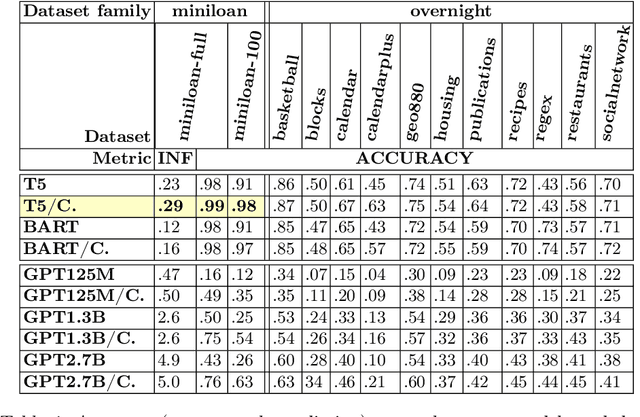

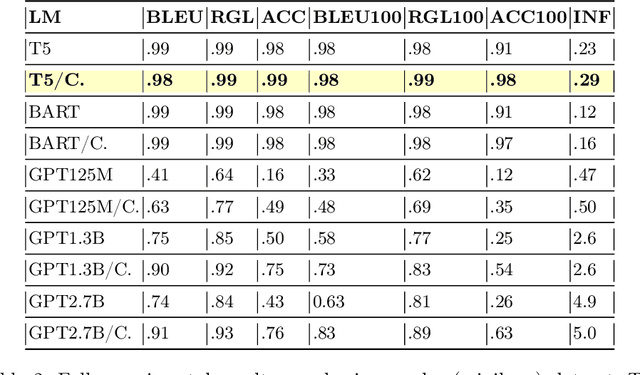
Abstract:Most business process automation is still developed using traditional automation technologies such as workflow engines. These systems provide domain specific languages that require both business knowledge and programming skills to effectively use. As such, business users often lack adequate programming skills to fully leverage these code oriented environments. We propose a paradigm for the construction of business automations using natural language. The approach applies a large language model to translate business rules and automations described in natural language, into a domain specific language interpretable by a business rule engine. We compare the performance of various language model configurations, across various target domains, and explore the use of constrained decoding to ensure syntactically correct generation of output.
Extending LIME for Business Process Automation
Aug 09, 2021
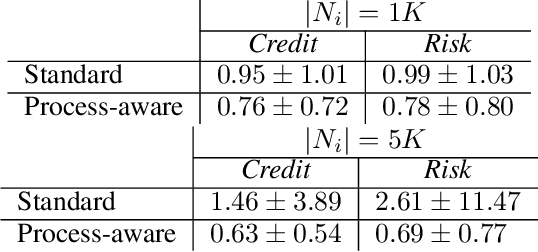

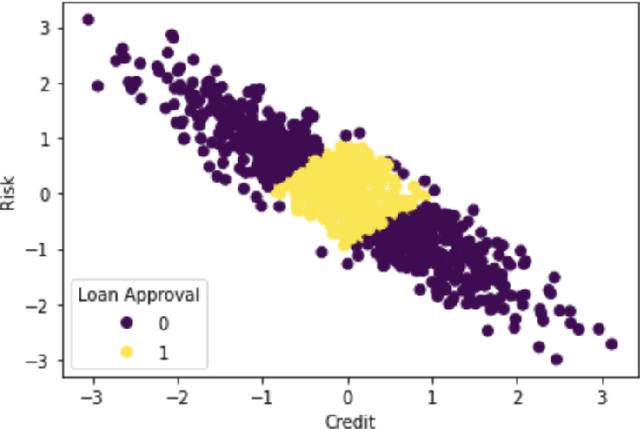
Abstract:AI business process applications automate high-stakes business decisions where there is an increasing demand to justify or explain the rationale behind algorithmic decisions. Business process applications have ordering or constraints on tasks and feature values that cause lightweight, model-agnostic, existing explanation methods like LIME to fail. In response, we propose a local explanation framework extending LIME for explaining AI business process applications. Empirical evaluation of our extension underscores the advantage of our approach in the business process setting.
 Add to Chrome
Add to Chrome Add to Firefox
Add to Firefox Add to Edge
Add to Edge